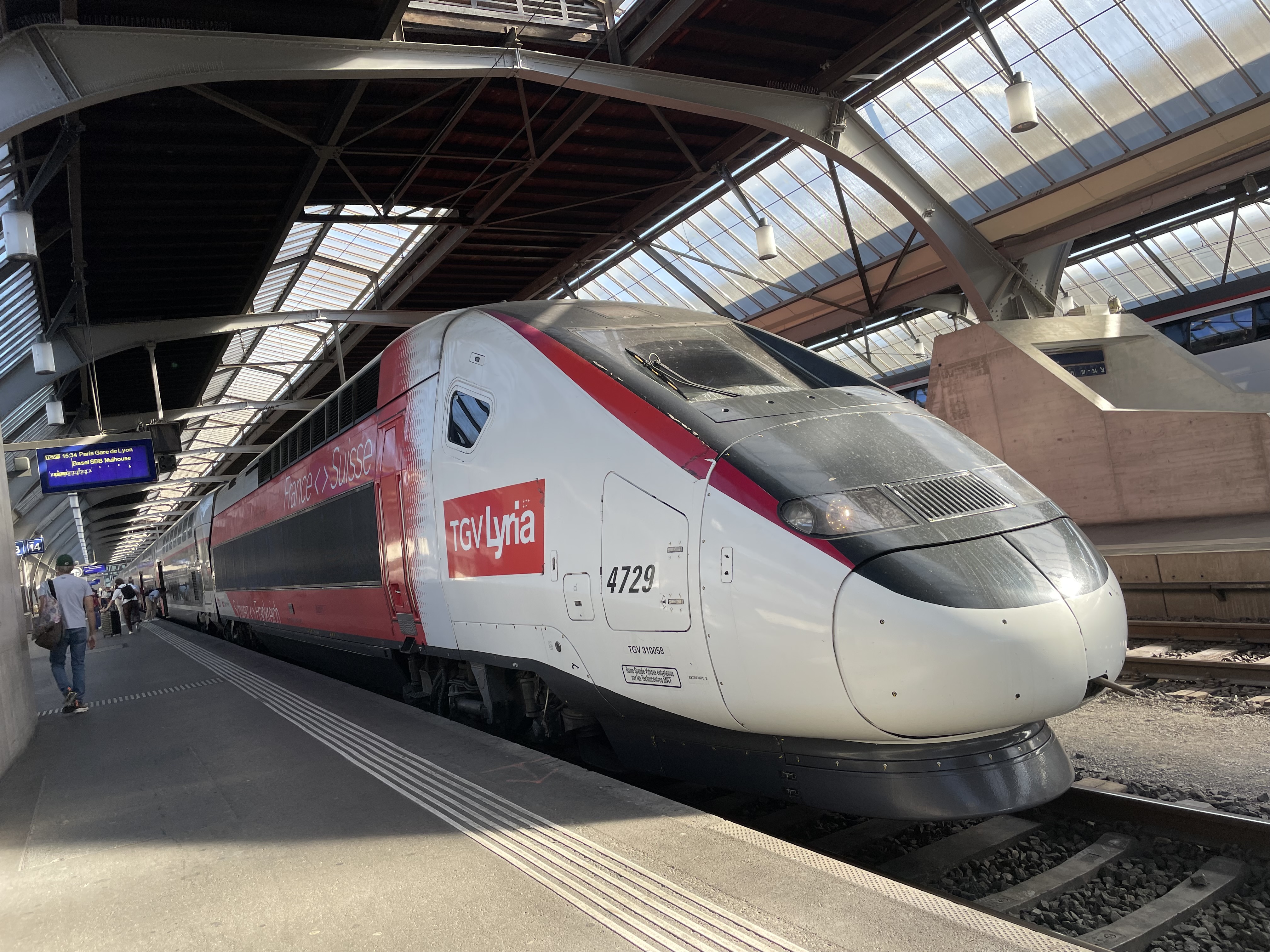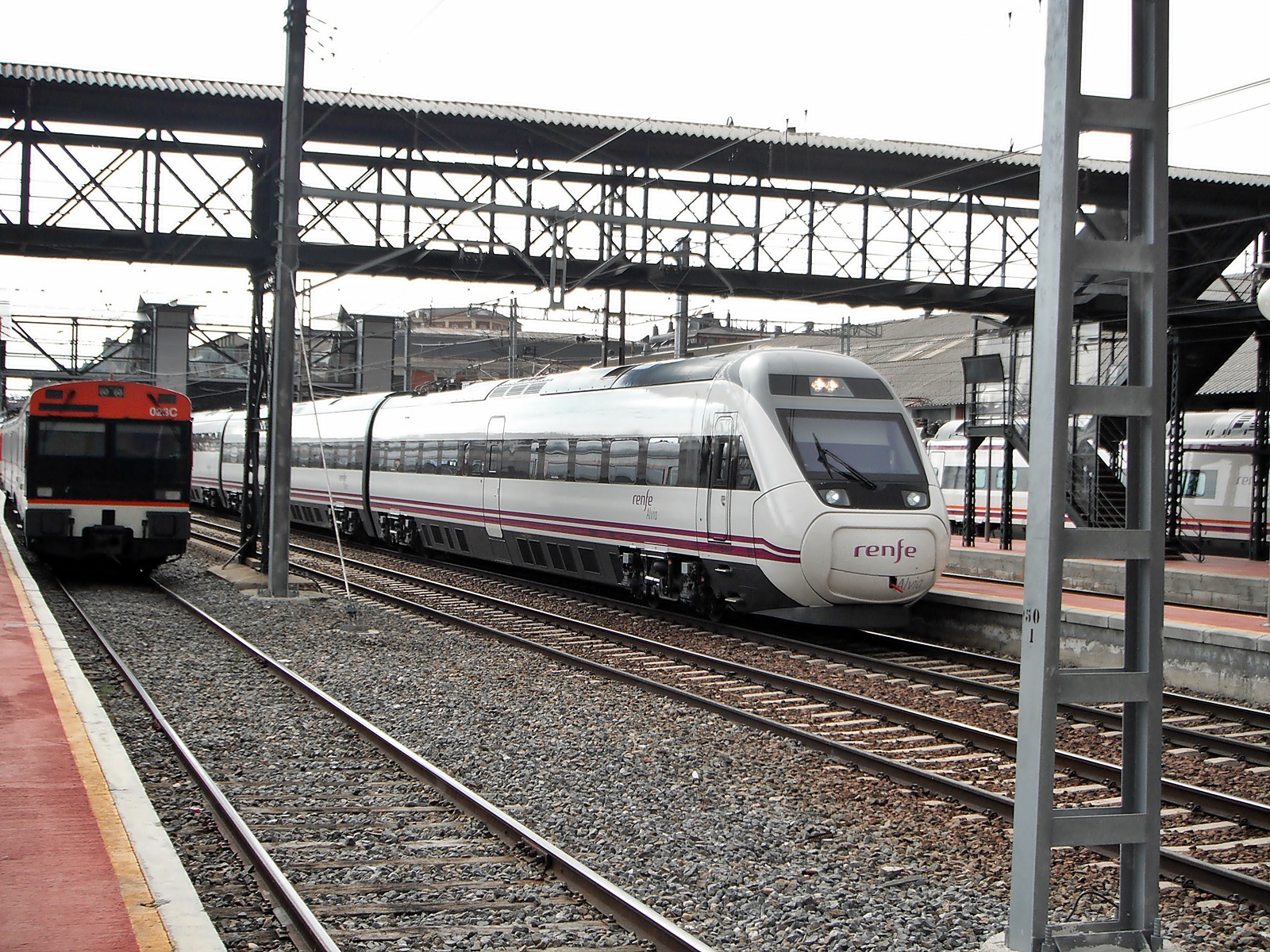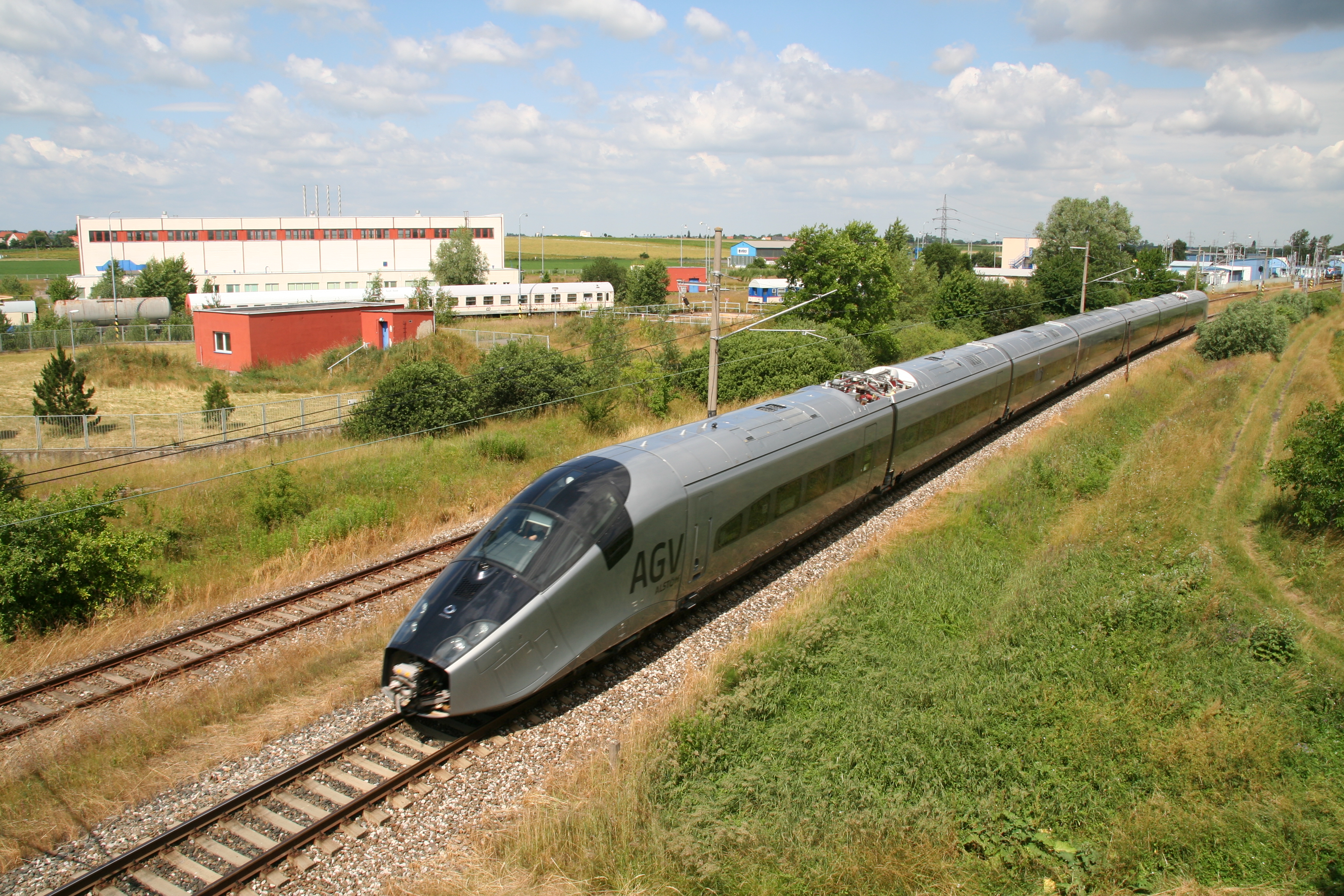|
TGV POS
The TGV POS is a TGV train built by French manufacturer Alstom which is operated by the French national rail company, the SNCF, in France's high-speed rail lines. It was originally ordered by the SNCF for use on the LGV Est, which was put into service in 2007. POS is an abbreviation of ''Paris-Ostfrankreich-Süddeutschland'' (), the route of the LGV Est. History The TGV POS project was a unique extension of the TGV Duplex order. Alstom delivered to SNCF 38 new tri-current power cars and 19 sets of double-deck Duplex passenger carriages. The tri-current power cars were paired with the 19 sets of single-level passenger carriages from TGV Réseau trainsets, while the two-level Duplex passenger carriages were paired with the 38 dual-current power cars from the Réseau trainsets. The tri-current function was necessary for the LGV Est, which ends at the German border, where the electrification switches to the system. Meanwhile, the heavily congested lines where the Réseau train ... [...More Info...] [...Related Items...] OR: [Wikipedia] [Google] [Baidu] |
TGV Lyria
TGV Lyria, owned by SNCF, yet jointly-operated by SNCF and SBB CFF FFS, is the brand name used for TGV railway lines connecting France and Switzerland. TGV Lyria is also a corporation that runs the service operated by SNCF in France and Swiss Federal Railways (SBB CFF FFS) in Switzerland – the staff consists of one French and one Swiss train manager on the whole journey. Corporate status Initially, the corporation was a ''groupement d'intérêt économique'' (GIE: "group of (shared) economic interest") between SNCF and SBB CFF FFS whose goal was the creation of a TGV service between Gare de Lyon (Paris) and Lausanne/Bern. Today, the corporation is officially a limited company according to French law (''Société par actions simplifiée'' / SAS). SNCF owns 74% of the capital and SBB CFF FFS the remaining 26%. History Starting in mid-1961, the route between Paris and Lausanne was operated by the Trans Europ Express ''Cisalpin'' trains, which cont ... [...More Info...] [...Related Items...] OR: [Wikipedia] [Google] [Baidu] |
TGV Duplex
The TGV Duplex is a French high-speed train of the TGV family, manufactured by Alstom, and operated by the French national railway company SNCF. They were the first TGV trainsets to use bi-level passenger carriages with a seating capacity of 508 passengers, increasing capacity on busy high-speed lines. While the TGV Duplex started as a small component of the TGV fleet, it has become one of the system's workhorses. A total of 160 Duplex trainsets were built: the original order of 89 first constructed in 1995, an additional 19 Réseau Duplex trainsets created as an extension of the TGV POS project in 2006, and 52 second-generation Dasye trainsets were first delivered in 2007 with revised traction motors and safety systems. The Duplex design was further refined into the third generation Euroduplex. Purpose The LGV Sud-Est from Paris to Lyon is the busiest high-speed line in France. After its opening in 1981 it rapidly reached capacity. Several options were available to ... [...More Info...] [...Related Items...] OR: [Wikipedia] [Google] [Baidu] |
Passenger Trains Running At Least At 300 Km/h In Commercial Operations
A passenger is a person who travels in a vehicle, but does not bear any responsibility for the tasks required for that vehicle to arrive at its destination or otherwise operate the vehicle, and is not a steward. The vehicles may be bicycles, buses, cars, passenger trains, airliners, ships, ferryboats, personal watercraft, all terrain vehicles, snowmobiles, and other methods of transportation. Crew members (if any), as well as the driver or pilot of the vehicle, are usually not considered to be passengers. For example, a flight attendant on an airline would not be considered a passenger while on duty and the same with those working in the kitchen or restaurant on board a ship as well as cleaning staff, but an employee riding in a company car being driven by another person would be considered a passenger, even if the car was being driven on company business. Legal status In most jurisdictions, laws have been enacted that dictate the legal obligations of the owner of a vehi ... [...More Info...] [...Related Items...] OR: [Wikipedia] [Google] [Baidu] |
TGV Trainsets
The TGV (; , , 'high-speed train') is France's intercity high-speed rail service. With commercial operating speeds of up to on the newer lines, the TGV was conceived at the same period as other technological projects such as the Ariane 1 rocket and Concorde supersonic airliner; sponsored by the Government of France, those funding programmes were known as ('National champions, national champion') policies. In 2023 the TGV network in France carried 122 million passengers. The state-owned SNCF started working on a high-speed rail network in 1966. It presented the project to President Georges Pompidou in 1974 who approved it. Originally designed as turbotrains to be gas turbine train, powered by gas turbines, TGV prototypes evolved into electric trains with the 1973 oil crisis. In 1976 the SNCF ordered 87 high-speed trains from Alstom. Following the inaugural service between Paris and Lyon in 1981 on the LGV Sud-Est, the network, centred on Paris, has expanded to connect major cit ... [...More Info...] [...Related Items...] OR: [Wikipedia] [Google] [Baidu] |
List Of High-speed Trains
The following is a list of high-speed trains that have been, are, or will be in commercial service. A high-speed train is generally defined as one which operates at or over in regular passenger service, with a high level of service, and often comprising multi-powered elements. In these tables, two or three maximum speeds are given: the column "Operated" refers to the maximum speed reached by the train in commercial operations, while the column "Design" refers to the theoretical maximum speed in commercial operations as announced by the manufacturer. Finally, a third "Record" speed may also be listed if there is an independently verified speed record. Multiple units High-speed trains currently or soon in service High-speed trains no longer in service Experimental or modified Conventionally wheeled locomotive-hauled As trains can have multiple configurations on the same service, service name is used as an identifier. Currently or soon in service No long ... [...More Info...] [...Related Items...] OR: [Wikipedia] [Google] [Baidu] |
SNCF TGV Thalys PBKA
PBKA is a high-speed trainset, manufactured by the French company GEC-Alsthom, and used on the international Eurostar service. Originally built for Thalys (which later merged with Eurostar) they were intended to operate between Paris, Brussels, Köln () and Amsterdam, forming the abbreviation PBKA. They were initially intended to be sole rolling stock of the service, but their extreme cost and complexity due to their quadri-current capability led the order of a simpler tri-current sister class, the Thalys PBA, a TGV Réseau derivative, with which they can work in multiple (coupled together). The PBKA trains are quadri-current, capable of operating under the same systems as the PBA sets: (France), (Belgium) and (the Netherlands and parts of France), but with the addition of (Germany). They are a member of Alstom's TGV family of trains. Each set has a power car on each end with three first class cars, a bar car, and four second class cars in between. The trains are in len ... [...More Info...] [...Related Items...] OR: [Wikipedia] [Google] [Baidu] |
ICE 3
ICE 3 (standing for ''Intercity Express, Intercity-Express'') is a family of high-speed electric multiple unit trains operated by Deutsche Bahn. It currently includes classes 403, 407 and 408 which are additionally specified as ICE 3, New ICE 3 and ICE 3neo respectively and formerly the retired class 406 or ICE 3M. ICE 3 trains have a maximum speed of in Germany, when travelling on the French high-speed rail lines. Class 403 are theoretically permitted to go up to a maximum speed of when travelling on the high-speed route between Frankfurt and Cologne. Based on the ICE 3M/F, Siemens developed its Siemens Velaro train family with versions used in Germany, Belgium, France, the United Kingdom, the Netherlands, Spain, China, Russia and Turkey. Class 403 The design goal of the ICE 3 (Class 403) was to create a higher-powered, lighter train than its predecessors such as the ICE 2 and the ICE 1. This was achieved by distributing its 16 traction motors underneath the whole train, ... [...More Info...] [...Related Items...] OR: [Wikipedia] [Google] [Baidu] |
Gare De Champagne-Ardenne TGV
Champagne-Ardenne TGV station ( French: ''Gare de Champagne-Ardenne TGV'') is a railway station located in Bezannes, France that opened in 2007 along with the first phase of the LGV Est, a high-speed rail line running from Paris to Strasbourg. It is situated about five kilometres south of Reims; the station is a stop for TGV, Ouigo and TER Grand Est services.Le réseau TER Fluo TER Grand Est, accessed 28 April 2022. Travel times 27 trains serve the station daily in each direction, for a total of 54 trains per day. It is directly connected to the stations of: |
Meuse TGV Station
Meuse TGV is a railway station that opened in June 2007 along with the LGV Est, a TGV high-speed rail line from Paris to Strasbourg. It is located in Les Trois-Domaines, about 30 km from Verdun and Bar-le-Duc, France. Designed by Jean-Marie Duthilleul, director of architecture for the SNCF, it is the first timber-built station in France since Abbeville in 1856. '''' 23 June 2008 On 14 November 2015, a test train performing commissioning tests on the second phase of the LGV Est left Meuse TGV station headed to Strasbourg, but [...More Info...] [...Related Items...] OR: [Wikipedia] [Google] [Baidu] |
Automotrice à Grande Vitesse
The AGV (acronym for French: ''Automotrice à grande vitesse''; lit. "high-speed railcar") is a standard gauge, high-speed, electric multiple-unit train designed and built by Alstom. Alstom offers the AGV in configurations from seven to fourteen carriages, with seating that can carry as much as 245 to 446 people. The trains are constructed from units comprising three cars (each with one transformer and two traction electronics packages located underneath the cars) and single-car driver-trailers. The maximum commercial speed is . Design of the train took place through the early 2000s, with a prototype, ''"Pégase"'', produced in 2008. Italian transport company NTV ordered 25 trains in 2008 (classified as AGV 575) with services beginning in 2012. According to Alstom, the advantages of the AGV are: increased seating area per train length (compared to a single-deck TGV); safety and maintenance advantages of the Jacobs bogie articulation design as well as higher energy efficienc ... [...More Info...] [...Related Items...] OR: [Wikipedia] [Google] [Baidu] |
Power Car
In rail transport, the expression power car may refer to either of two distinct types of rail vehicle: *a vehicle that propels, and commonly also controls, a passenger train, potentially a multiple unit train, often as the lead vehicle; *a vehicle equipped with machinery for supplying heat or electrical power to other parts of a train. The first of these types of vehicle is closely related to the locomotive. What differentiates the locomotive and the first type of power car is their construction or use. A locomotive can be physically separated from its train and does nothing but provide propulsion and control (and heat or electricity for passenger trains). On the other hand, a power car of the first type is frequently an integral part of its train, and if the train uses distributed traction, some of the car's interior space may be used for carrying passengers or cargo. Examples United States Nearly all high speed trains use power cars, frequently at both ends. An example ... [...More Info...] [...Related Items...] OR: [Wikipedia] [Google] [Baidu] |
Project V150
Operation V150, where 150 refers to a target speed in metres per second, was a series of high-speed trials carried out on the LGV Est. The V150 was a specially configured TGV high-speed train (weighing only ) notable for breaking the world railway speed record on 3 April 2007. The train was built in France and reached a speed of on an unopened section of the LGV Est between Strasbourg and Paris, in France topping the previous record of set in 1990. Record of 2007 Operation V150 trials were carried out on the LGV Est prior to its June 2007 opening. The trials were conducted jointly by SNCF, TGV builder Alstom, and LGV Est owner Réseau Ferré de France between 15 January 2007 and 15 April 2007. Following a series of increasingly high-speed runs, the official speed record attempt took place on 3 April 2007. The top speed of , ) was reached at kilometre point 193 near the village of Le Chemin, between the Meuse and Champagne-Ardenne TGV stations, where the most favorable p ... [...More Info...] [...Related Items...] OR: [Wikipedia] [Google] [Baidu] |




